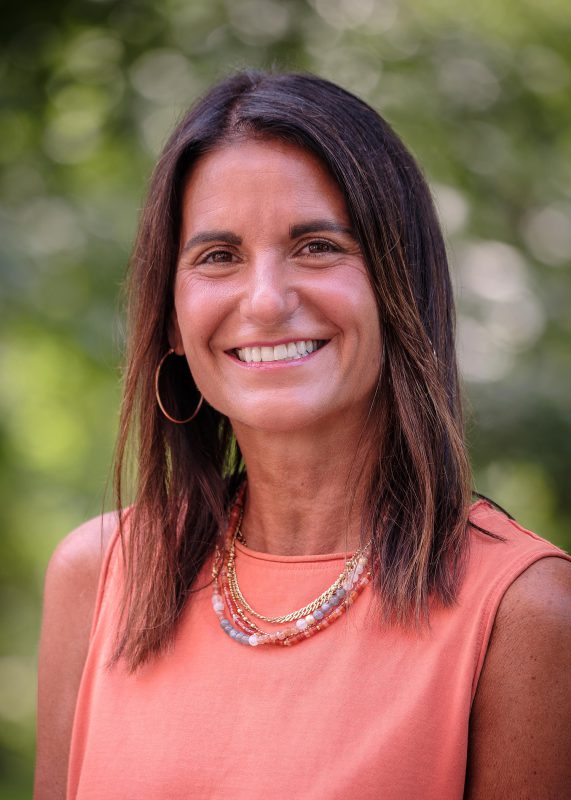Three recent Kalamazoo College grads have earned opportunities to work as English language teaching assistants and cultural ambassadors in Spain starting this fall.
Ali Randel, Andre Walker Jr. and Maggie Zorn, all from the class of 2024, have been selected for the North American Language and Culture Assistants Program (NALCAP) through the Education Office of the Embassy of Spain. They will work under the supervision of teachers in Spain to help Spanish students improve their English skills and understand American culture.
NALCAP recipients receive a monthly stipend and medical insurance for 14–16 hours of assistant teaching per week. They make their own housing arrangements and are encouraged to immerse themselves in the language and culture of Spain while sharing the language and culture of the United States with the students they teach. The program runs from October 1 to May 31, and participants can choose to apply for a renewal.

Ali Randel
Randel double majored in English and Spanish at K; completed a journalism Senior Integrated Project (SIP) about health and wellness resources on campus; was a student participant, wellness intern and president her senior year with Hillel at K; and studied abroad in Cáceres, Spain. On study abroad, she met several NALCAP participants, including a K alum, which first piqued her interest in the program. She knew she wanted to return to Spain after graduation, and Director of Grants, Fellowships and Research Jessica Fowle helped her consider options and apply to programs including NALCAP.
During her time in Spain, Randel hopes to continue improving her Spanish speaking skills, travel throughout Europe, and spend time with her host family from Cáceres.
“When I was on study abroad, my speaking improved a lot, and I’m hoping that I can continue to improve that and also learn more about Spanish culture,” Randel said. “I loved it in Spain so much when I studied abroad, and I can’t wait to get back and experience it through a different lens, with high school students, in a professional role and in a different city.”
Randel is placed at a high school in Bedmar y Garcíez, a small town in the southern Spanish province of Jaén.

Andre Walker Jr.
A psychology and Spanish double major, Walker incorporated both fields of study into his SIP by studying possible reasons bilingual people have been found to be more creative. During his time at K, Walker participated in the Black Student Organization, the Latinx Student Organization, Students for Justice in Palestine, and the volleyball club. He also studied abroad in Chile.
While applying to NALCAP, Walker was finishing his SIP and reading about how other countries prioritize learning a second language, especially English.
“In Spain, they start as early as primary, which I think is amazing, because the earlier you start, the more proficient you can become at a second language,” Walker said. “I want to see what the bilingual experience is outside of the United States, see how different and how beneficial it really is, and use that as a force to encourage more bilingual education here.”
Walker will teach primary students in the city of Santiago de Compostela in the northwestern region of Galicia. He hopes to improve his Spanish, learn some of a regional language called Galego (closely related to Portuguese), travel, and possibly extend the research of his SIP.
“I’m using this as a driving force of my long-term goals of wanting to use Spanish in the workplace,” Walker said. “I want to be able to advocate for the importance of hiring more bilingual people and the success they can bring for the overall work environment and spread the importance of bilingual education.”

Maggie Zorn
Zorn studied business and Spanish at K, was a swimming and diving student-athlete and studied abroad in Cáceres. Zorn also volunteered for the Mary Jane Underwood Stryker Center for Civic Engagement in Swim for Success, which offers swimming lessons to disadvantaged local children in a partnership with the City of Kalamazoo Parks and Recreation Department.
Zorn has been placed in Almonte, a town in the southwestern Spanish province of Huelva in the region of Andalucía, with high school-age students.
“I am very grateful for the opportunity to revisit Spain, as I went to Cáceres as a junior for study abroad,” Zorn said. “I am incredibly passionate about teaching, and as a Spanish major, I see this as a way to combine my interests; long term, I am hoping to potentially turn teaching into a career. I am most looking forward to learning more about the culture and enjoying the natural spaces.”



















